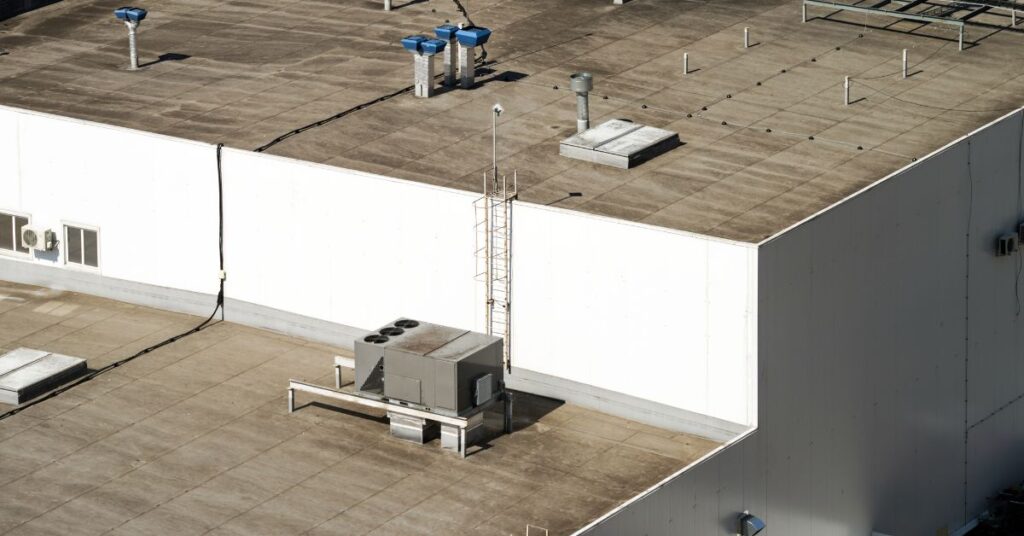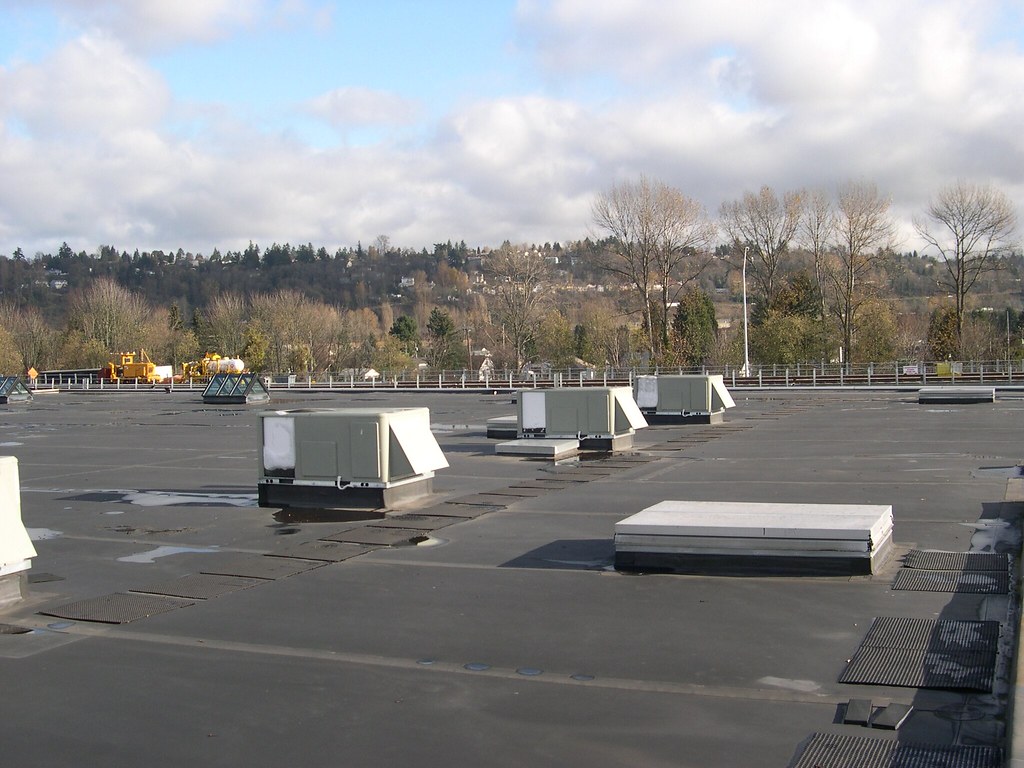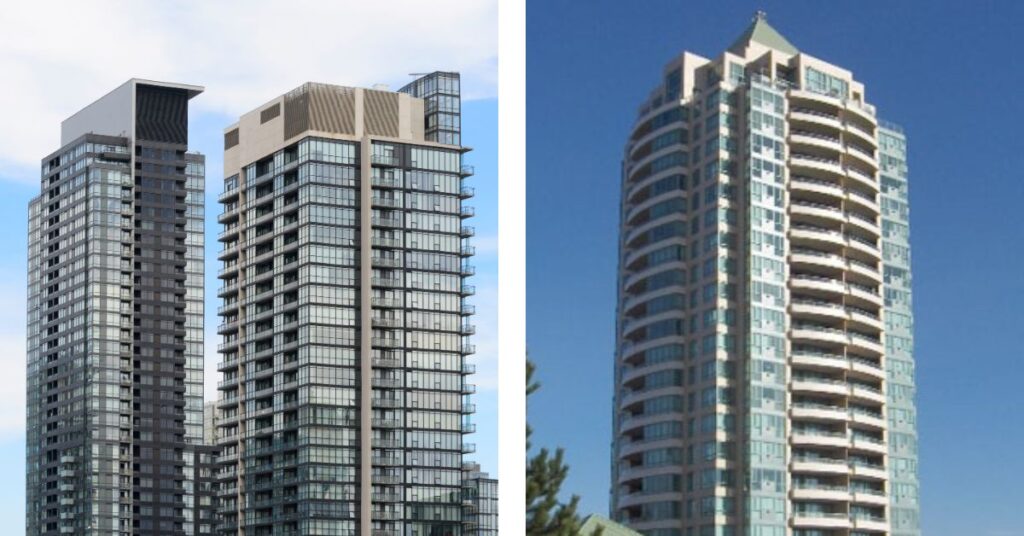Why Do Commercial and Condo Building Roofs Tend to Be Flat?


Ever wondered why the majority of commercial and condo buildings have flat roofs? Is it a mere design choice, or are there practical reasons behind it? In this article, we’ll delve into the reasons behind this prevalent architectural trend.
What is a Flat Roof?
A flat roof, as the name implies, is a roof which is almost level in contrast to the many types of sloped roofs, each with its unique lifespan as discussed in our article ‘What Is The Expected Lifespan of A New Roof?’.
Why Commercial Buildings Use Flat Roofs
Space Utilization
One of the primary reasons commercial buildings opt for flat roofs is to effectively utilize space.
HVAC Systems
Flat roofs provide an excellent location for HVAC systems, keeping them out of sight while still providing easy access for maintenance and repairs.


Additional Space for Amenities
For some businesses, the roof serves as additional space for amenities such as rooftop gardens, solar panels, or even helipads.
Cost-Effective Construction and Maintenance
The construction of a flat roof is typically less complex and thus more cost-effective than its sloped counterpart. When it comes to maintenance and repairs, they are also generally easier and safer to perform, though some seasons may pose unique challenges. For instance, you might want to read up on how to deal with emergency roofing repairs during winter.
Accessibility
Flat roofs are easier to access and navigate, which is beneficial for maintenance and safety checks.
Why Condo Buildings Use Flat Roofs
Aesthetic Appeal
For condos, a flat roof can contribute to a modern and sleek architectural design, enhancing the building’s overall aesthetic appeal.


Urban Planning and Zoning Regulations
In many cities, zoning regulations may limit the height of buildings. If the building adopts a flat roof design, the developer can potentially build one or two more floors of units, rendering a more profitable project. However, it’s also essential to understand when a roof is beyond repair and a replacement is needed, as we discuss in our article ‘At What Point Is a Roof Beyond Repair and a Roof Replacement Is Needed?’.
Potential Drawbacks of Flat Roofs
Drainage Issues
While there are many advantages to flat roofs, they’re not without their potential issues. One such issue is drainage. Flat roofs require proper drainage systems to prevent water pooling, a topic we explore more in our article ‘Can You Roof in the Rain?’
Heavy Load Management
Snow or heavy rain can put significant weight on a flat roof, which needs to be carefully managed to prevent structural issues. To better understand this, you can check out our article on ’12 Common Threats to Your Roof’s Structural Integrity’.
Conclusion
Flat roofs are a common sight on commercial and condo buildings due to their practical benefits and aesthetic appeal. However, they require careful design and maintenance to ensure longevity and performance, which we outline in our guide ‘The Best 12 Ways To Proactively Protect Your Roof’.
existing roof, choosing the right type for your building is critical. As we’ve seen, flat roofs offer numerous benefits and can be an excellent choice for commercial and condo buildings alike. However, the decision should always consider local conditions, regulations, and professional advice. If you’re located in one of the many areas we service, our team is ready to provide expert consultation and services tailored to your needs. Find more information specific to your city:
- Burnaby roofers and roofing contractors
- Coquitlam roofers and roofing contractors
- Delta roofers and roofing contractors
- Ladner roofers and roofing contractors
- Langley roofers and roofing contractors
- Maple Ridge roofers and roofing contractors
- New Westminster roofers and roofing contractors
- North Vancouver roofers and roofing contractors
- Pitt Meadows roofers and roofing contractors
- Port Coquitlam roofers and roofing contractors
- Port Moody roofers and roofing contractors
- Richmond roofers and roofing contractors
- Surrey roofers and roofing contractors
- West Vancouver roofers and roofing contractors
- White Rock roofers and roofing contractors
- Vancouver roofers and roofing contractors
Don’t leave the health of your roof to chance; reach out to our experienced team today
